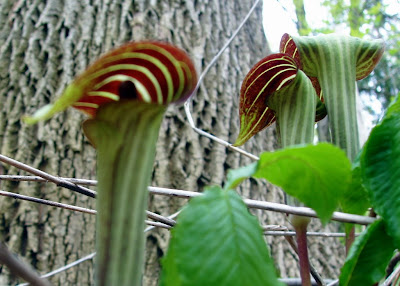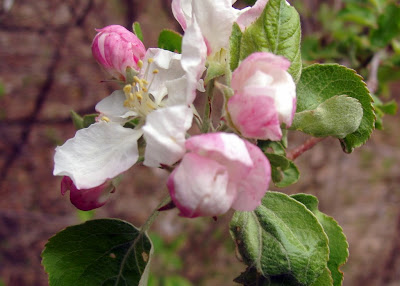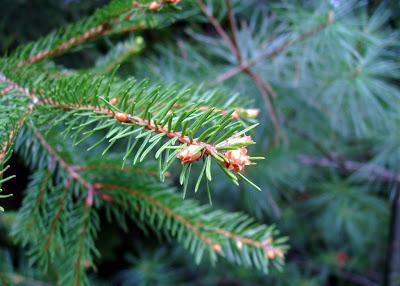
I knew immediately what it was - and got it out onto the back lawn as soon as possible so I could play.

I opened it slowly, because that's how I like opening new toys.


It was a Hudson Bay Flint and Steel set.

I bought it on eBay from D&B Primitive Forgeworks a few weeks ago and I am pleased as punch.

Darrel Aune, a full time blacksmith, bladesmith and primitive/survival tool maker and enthusiast, made this particular piece. In fact, he sends the flint and steel in a tin can containing a small package of charcloth and some jute twine. The jute is used as tinder to catch the heat of the glowing charcloth, which of course catches the initial spark.

I guess it is called a Hudson Bay style because of the shape that was traditionally used by Voyageurs and travelers in the region. There are all kinds of shapes and styles that derive from various places around the world.

You can see his forgemark in the photograph above.

The concept of a steel & flint is very simple.

You strike the hard, high-carbon steel against a piece of hard stone (like flint or chert or even quartzite) and small splinters will be cast off in the impact.

The energy of the impact will convert to thermal energy, and the small particles will ignite and become sparks.

The trick is to hold the flint in one hand, with a sharpened edge exposed - remember it is the steel that is shaved off and not the flint that ignites.

On top of the flint, you squeeze a piece of charcloth (see my tutorial on How to Make Charcloth for Tinder for a Firesteel or Steel Striker) against the top of the flint with your thumb and strike down on the stone with the steel.

Using a flick-of-the-wrist technique, you strike the two objects together at great speed. This speed greatly increases the impact energy.

The slivers will tear off, ignite and send sparks upwards onto the charcloth. Once the charcloth is glowing, you put the hot substance into a ball of tinder.

In this case I used some dried grass that was laying about on the lawn, and wrapped this in some newspaper in which the package arrived.

I blew air into the ball of tinder, and within seconds thick white dense smoke poured out (the grass was still a bit damp from laying around on the lawn), and then with continued breaths, the ball ignited into flames.

After showing Spring my new toy, she carefully made mention of pyromania.

But there is something purely magical about rediscovering a link with the past (over 10,000 years ago) when humans first started using iron to cast sparks and make fire.
There is something magical about carrying this skill through the ages, into an age of matches and piezo-electric ignitors and technology. And of course, I enjoy the sense of not being reliant on modern technologies to create fire - which keeps the bogeyman away, which cooks our food, which warms our shelters and boils our water and which touches a primal part of us.
Cheers,
Mungo




































.JPG)

